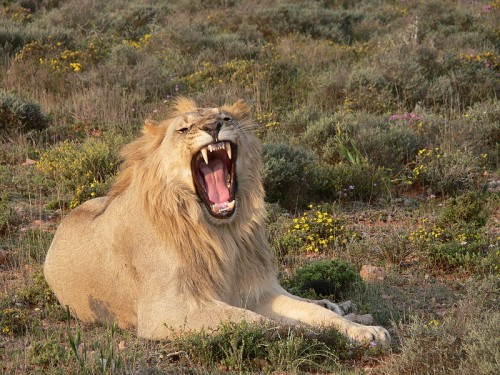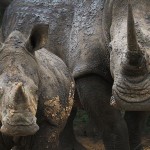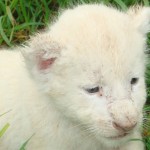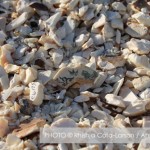
The U.S. Fish and Wildlife Service is reviewing the African lion’s status in order to determine whether this species (Panthera leo leo) requires protection under the Endangered Species Act (ESA).
Listing the African lion under the ESA would prohibit the import of lion trophies and parts (“specimens”), unless such imports enhance the propagation or survival of the species or are for scientific purposes.
Section 8 of the ESA provides for “International Cooperation” in the conservation of foreign, listed species, and listing a foreign species heightens global awareness about the importance of conserving the species.
Annamiticus submitted the following comment regarding the issues of trophy hunting and lion bone trade:
Subject: Petition to List the African Lion (Panthera leo leo) as Endangered Pursuant to the U.S. Endangered Species Act
Annamiticus supports the Petition to list the African lion (Panthera leo leo) as Endangered.
We note that the African lion population is experiencing a precipitous decline. At most, there are 32,000 – and perhaps as few as 15,000 – lions remaining on the entire African continent, as compared to 100,000 lions in the 1960s. The population trend of the African lion is classified as Decreasing by the IUCN Red List of Threatened Species.
According to a 2012 study conducted by Panthera, an estimated 24,000 African lions live in population strongholds and approximately 4,000 are in potential strongholds. However, more than 6,000 lions could already be doomed in “populations that have a very high risk of local extinction” and in many of West Africa’s national parks, there are no lions remaining at all.
A separate study published in 2012 by Lion Aid reveals a lower figure of just 15,244 wild lions in Africa: 645 – 795 in Western and Central Africa, and 14,450 in Eastern and Southern Africa. The authors estimate that wild lions are already extinct in 25 African countries.
We note that despite the steep and rapid decline in the African lion population, this species continues to be trophy hunted in Africa, with a significant number of wild-sourced lion trophies exported to the United States. Regarding recreational and commercial trade, the Petitioners found that of 7,090 lion specimens (representing a minimum of 5,663 lions) traded internationally for recreational trophy hunting purposes from 1999 – 2008, the U.S. imported 4,139 lion specimens (representing a minimum of 3,600 lions). During the same time period, 2,715 additional lion specimens (the equivalent of 1,043 lions) were traded internationally for commercial purposes (“for the purpose of sale in the importing country”); the U.S. imported 1,700 of these (the equivalent of 362 lions). The Petitioners report that “most hunting trophies were exported from South Africa”.
It is relevant to the Petition that South Africa’s lion breeding and trophy hunting sectors have come under scrutiny, both inside and outside of the country. A 2012 report authored by a panel of lion conservationists and wild cat biologists from Panthera,the IUCN Cat Specialist Group and a team of university-based lion researchers found that while these South African proprietors claim to be “conserving” lions by breeding them for release into the wild, “this has not taken place”. The authors explain that “a long history of private ownership of lions from various sources has created a mongrel captive population that is not managed under accredited breeding programmes” and cautions “these lions should never be considered for release in or near established wild populations”.
Investigative reports from inside and outside of South Africa have revealed that a significant number of captive-bred lions are sold into trophy hunting. Furthermore, certain South African lion breeders are selling lion skeletons and bones to wildlife traffickers. These traffickers are known to re-sell the lion bones in Asia, as a substitute for tiger bones and for their own purported value. While some of the skeletons and bones are believed to have derived from trophy hunted lions (the hunter wants only the head and/or skin), well-known lion breeders have admitted to applying for CITES permits to euthanize lions for the purpose of selling the skeletons.
We note that from 2008 – 2010, 226 lion skeletons, 674 lion bones and 250 kg of lion bones were exported by South Africa to Vietnam and Laos. (CITES Trade database, UNEP World Conservation Monitoring Center, Cambridge, UK.)
- 2008: 60 lion bones exported to Vietnam;
- 2009: Two lion bones exported to Vietnam; 250 kg of lion bones and five lion skeletons exported to Laos;
- 2010: 612 lion bones (combined total) exported to Vietnam and Laos; 91 lion skeletons exported to Vietnam and 130 lion skeletons exported to Laos.
We note with concern that South Africa’s lion breeding and trophy hunting sectors have been linked to the international illegal trade in rhino horn. In 2012, a Thai national was sentenced to 40 years in prison for his role in using South African trophy hunts to launder rhino horns for the illegal market (at time of writing, this case is ongoing). It is of significance that the investigation revealed a paper trail of business transactions and photographs which established that this international criminal syndicate used a South African trophy hunting and lion breeding operation to supply rhino horns and lion bones to a Southeast Asian company owned by an “untouchable” wildlife trafficking kingpin.
We urge the U.S. to take a leadership role in the conservation of African lions by listing this species as Endangered under the ESA.
Read the USFWS news release here. Deadline for public comment was January 28, 2013.




